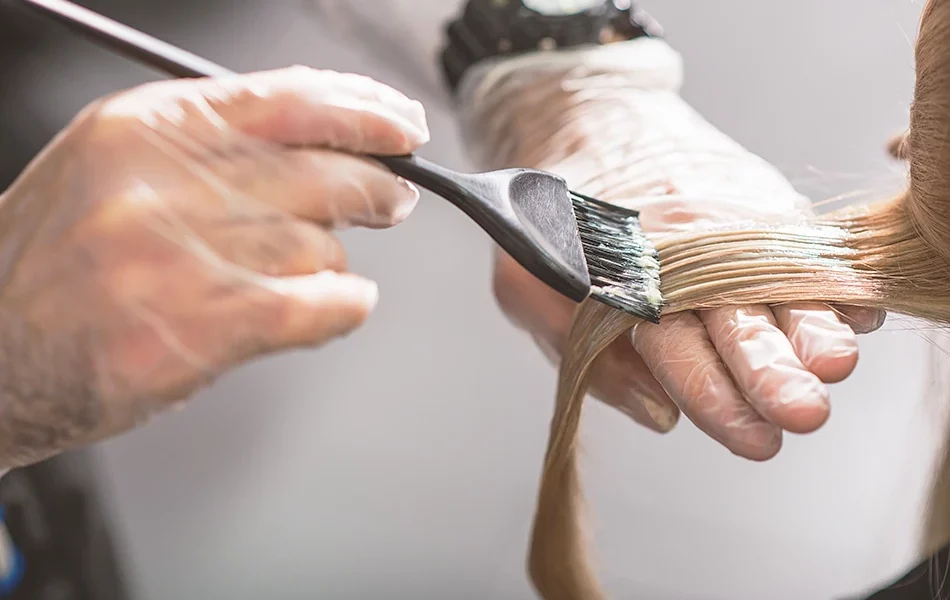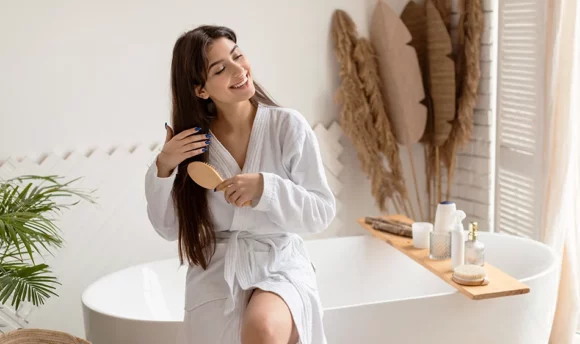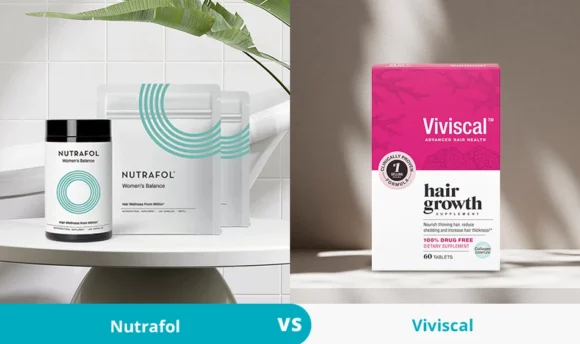Can Hair Dye Cause Hair Loss? Possible Links Between Dye and Hair Loss
There’s no denying that hair dye can have a detrimental effect on the health of your hair. But can it also be blamed for hair thinning or loss? Keep reading to learn more.

If you dye your hair regularly, you might notice that it isn’t growing as quickly as you’d like or might even be getting shorter. Sounds like you? Then there’s a good chance it left you wondering if hair dye is to blame.
And although the dyeing effects that bleaching agents can have on the hair are quite obvious, below we will discuss whether you can hold it responsible for stunted growth and hair loss.
Can Hair Dye Cause Hair Loss?
Yes, hair dye can cause hair loss, but nothing permanent. Hair dye affects only the hair shaft, not the follicles responsible for controlling growth.
That being said, the dyeing procedure can be stressful on the hair and lead to increased hair breakage, especially for those who do not follow a proper haircare regimen afterward.
What Is the Reason for Hair Loss After Dyeing?
Hair dyeing isn’t responsible for permanent hair loss but can negatively affect hair health. The excessive combing or back combing used to manipulate hair – especially for balayage hair treatments, can prolong the hair’s shedding cycle, also known as the telogen cycle.
Permanent hair dyes like bleaches used to lighten hair also contain hydrogen peroxide, an ingredient that damages the hair shaft. Although permanent hair color doesn’t affect new hair growth or reduce the growth phase, it can cause hair breakage, making it difficult to grow long, healthy hair.
How Are Hair Dyeing and Hair Loss Connected? Possible Side Effects
Although dyeing hair shouldn’t cause permanent damage or significant hair loss, hair dyes, especially those containing hydrogen peroxide, can cause hair thinning and even increased hair shedding.
Explore why hair dye can have potentially adverse effects on hair and get equipped with some tips to keep your hair healthy.
#1 Allergy
PPD (paraphenylenediamine), a common additive in many hair dyes, was, at one point, the cause of so many allergic reactions that it was banned from countries like Germany, France, and Sweden. But finding an alternative proved so difficult that it is now allowed in most hair dyes on the market.
An allergic reaction to PPD can result in skin conditions such as contact dermatitis, which causes itching and scaling but usually resolves within a few days.
Because scalp health is essential to steady hair growth and overall hair health, using products that cause an allergic reaction can lead to stunted growth and increased hair shedding.
#2 Damaged hair follicles
Although the dye itself is not responsible for damaging the hair follicles – which are under a protective layer of sebum – other aspects of the dyeing process can be detrimental to their health.
Most of the trauma is caused by excessive brushing, combing, and backcombing, usually involved in the hair dyeing process. The manipulation can loosen the hair, damaging the follicles and increasing hair shedding.
Contact dermatitis, caused by allergic reactions to hair dye, can also negatively affect scalp health, taking a toll on the follicles and subsequent hair growth.
#3 Increased hair porosity
The porosity of hair refers to the hair’s ability to absorb and maintain moisture and is directly affected by the dyeing process.
Ideally, you want your hair to be somewhere in the middle regarding porosity. Non-porous hair struggles to absorb moisture, while porous hair struggles to retain moisture.
Hair dyes, especially those that contain bleach, increase hair’s porosity. For this reason, it’s difficult for colored hair to retain moisture. Dry hair loses much of its elasticity, leaving it vulnerable to breakage that can result in hair loss.
#4 Weakening of the hair shaft
Another way that hair dye can contribute to hair loss is by damaging the hair shafts, which sustain permanent oxidative damage when treated with permanent dyes.
This is because the pigment, the part of the hair that determines the color, is located in the inner layer of the shaft. In order to “lift” or lighten it, the hydrogen peroxide must penetrate the outer layer of the hair shaft and break down the fatty acids that protect the hair from damage.
With the hair more vulnerable to external stress, it becomes easier for the hair shafts to break, leading to unwanted breakage and hair loss.
#5 Hair breakage
All of the previous side effects of hair dye contribute to the factor that is most responsible for dye-related hair loss – breakage.
Hair breakage is when your hair snaps, and it usually happens toward the end of the hair strands. This kind of damage happens due to the hair becoming dry, brittle, and losing its elasticity, all of which can happen due to over-dyeing.
When experiencing intense hair breakage, you’ll likely notice that your hair is always getting shorter, even without you cutting it. This is a sign that it’s time to either give your hair a break from dyeing or get intentional about strengthening and nourishing your hair.
FAQs
The stress of dyeing your hair definitely won’t help improve the health of already-thinning hair. For this reason, it’s best to get your hair healthy using nourishing hair products before stepping back into the salon.
Dyeing hair doesn’t affect the hair growth cycle since it isn’t targeted to the follicles, the structures that dictate hair growth. It can, however, cause breakage on hair ends, leading to reduced length.
No, home-dyeing kits like those created by L’Oreal do not contribute to hair loss since they are created with hair-safe ingredients. However, using permanent hair dyes improperly can lead to intense hair shaft damage and subsequent breakage.
A Word From a Trichologist
If you love experimenting with colored hair, you have no reason to forgo the experience altogether. Although hair dye has an indisputably negative effect on hair, there are many ways to continue your hair dye journey while keeping your hair healthy.
Changes as simple as switching up your hair-drying technique, using nourishing hair masks weekly, and ensuring to get a trim once every three months can make all the difference.
That being said, choosing to dye your hair regularly will always damage your hair, regardless of how well you care for it in between getting it done. Anyone with especially damaged hair will likely benefit from taking a break from dyeing altogether or getting a low-maintenance hair color technique like balayage.
Conclusion
Hair thinning and breakage are a natural part of the hair dyeing process. Adverse allergic reactions, changes to hair porosity, and damage to the shaft and follicle can cause hair shedding and stunted growth, but that doesn’t mean you must stick to your natural hair color to prevent these negative effects.
Keeping your hair healthy can be as simple as protecting it from the sun or limiting how often you wash it. There are also many holistic practices for speeding up hair growth that you can partake in to keep your hair looking its best.

















































 Select your language:
Select your language: 








